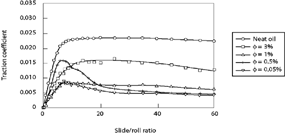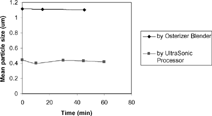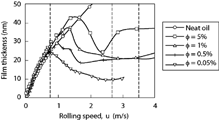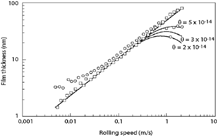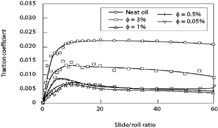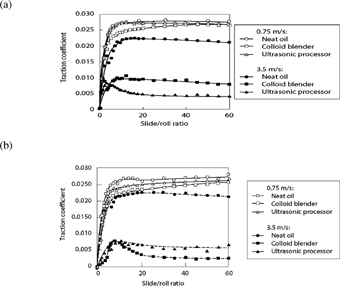Figures & data
TABLE 1 Properties of Oil
FIG. 2 Particle size distribution for three different methods of emulsion preparation, using an initial oil concentration of 1%.
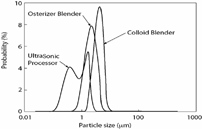
FIG. 3 Film thickness measurements for oil-in-water emulsions. These results are for the Osterizer blender emulsions. Emulsions prepared with the other two methods give similar results.

FIG. 7 Traction behavior of emulsions as a function of slide-to-roll ratio for different oil concentrations below the first critical velocity (u = 0.75 m/s).
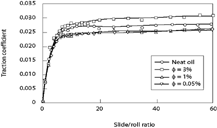
FIG. 8 Traction behavior of emulsions as a function of slide-to-roll ratio for different oil concentrations between the two critical velocities (u = 2.75 m/s).
